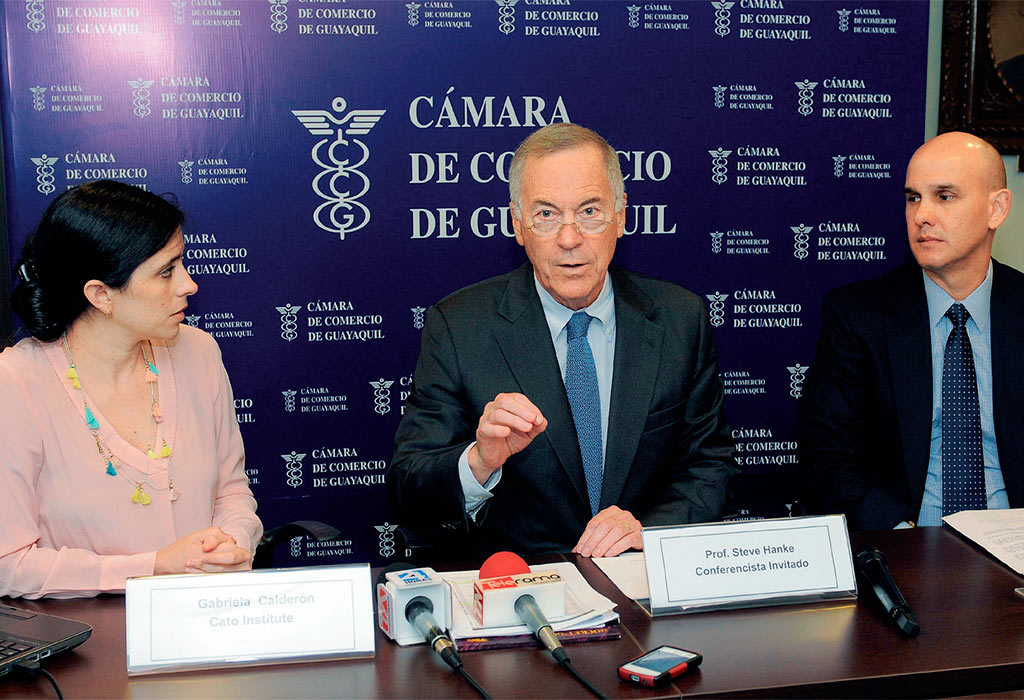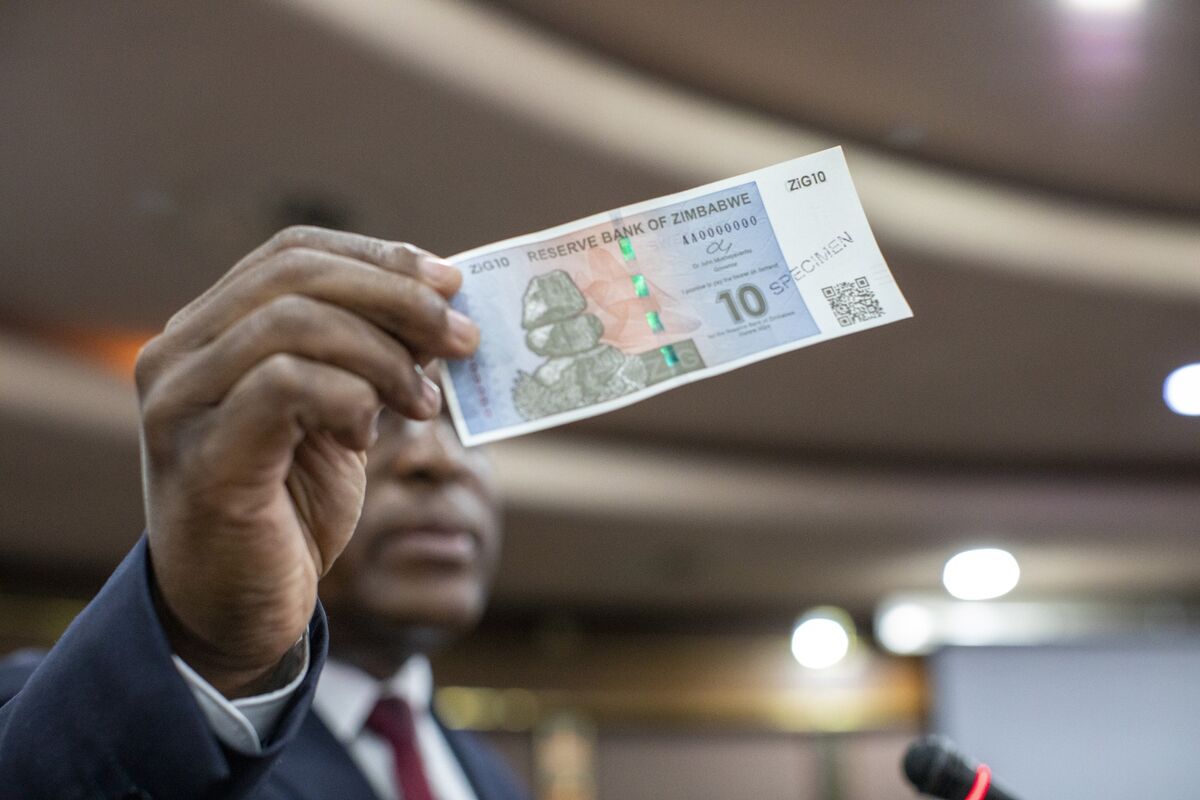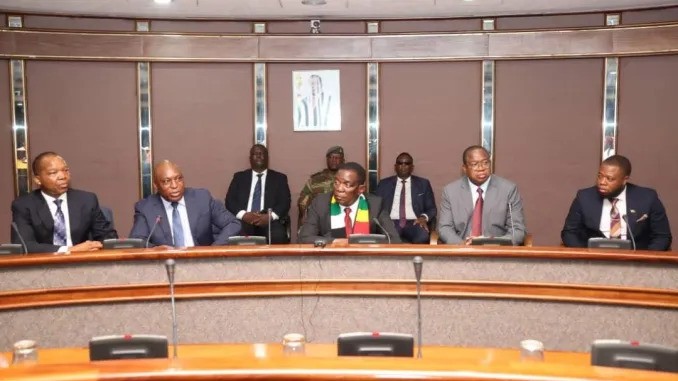In 2008, Zimbabwe suffered the second most severe episode of hyperinflation in recorded history. Zimbabwe’s annual inflation rate peaked in November 2008, reaching 89.7 sextillion (10^23) percent. Well, Zimbabwe is experiencing hyperinflation again today. Zimbabwe’s annual inflation rate is currently at 348%. Zimbabwe has officially experienced the 58th verified episode of hyperinflation on record. This episode has been added to the Hanke-Krus World Hyperinflation Table, which first appeared in the authoritative Routledge Handbook of Major Events in Economic History (2013).
During Zimbabwe’s hyperinflation episode (2007-2008), the Reserve Bank of Zimbabwe failed to report an accurate measure of inflation rates. When episodes of hyperinflation occur, the only feasible and reliable way to measure the inflation rate is via the application of Purchasing Power Parity (PPP). To do that, one needs data on the exchange rate between the domestic currency and a stable international currency. This was not feasible in Zimbabwe. The Zimbabwe dollar was not traded on an organized exchange that reported exchange rates, and the use of black-market exchange rates was not feasible either.
However, the organized stock market in Harare did provide prices that allowed for the calculation of implied Zimbabwe dollar exchange rates. One stock, Old Mutual, was, and still is, listed on both the London Stock Exchange and the Zimbabwe Stock Exchange. Each share of Old Mutual commands the same claim on the company’s earnings and assets, irrespective of the market it is traded on. Therefore, given arbitrage and PPP, the ratio of the Old Mutual share price in Harare to that in London equaled the Zimbabwe dollar/sterling exchange rate.
To convert the resulting Zimbabwe dollar/sterling exchange rate to a Zimbabwe dollar/U.S. dollar rate, I multiplied the Zimbabwe dollar/sterling rate by the sterling/U.S. dollar rate, creating what is known as the Old Mutual Implied Rate (OMIR). By using the OMIR as an exchange rate between Zimbabwe dollars and USD, PPP was then applied as the final link necessary for calculating inflation rates.
*****
When President Robert Mugabe’s party, ZANU-PF, regained control in Zimbabwe in 2013, government spending and public debt surged, resulting in economic instability. To finance its deficits, the government created a “New Zim dollar.” The New Zim dollar is issued at par to the U.S. dollar, but trades at a significant discount to the U.S. dollar. The money supply, as a result of the issuance of the New Zim dollar, exploded in Zimbabwe, and so has inflation.
Just how do we know that Zimbabwe’s inflation rate has skyrocketed? We know this by employing the same theory and method of measurement that was used to calculate Zimbabwe’s 2007-2008 hyperinflation episode [Hanke-Kwok]. Using the implied exchange rate (the OMIR), we are once again able to apply Purchasing Power Parity (PPP) to calculate an accurate measurement of Zimbabwe’s inflation rate.
After doing so, we find that Zimbabwe is experiencing hyperinflation for the second time in less than ten years. Hyperinflation occurs when the monthly inflation rate reaches 50% per month and remains above that rate for at least 30 consecutive days. This initial threshold was breached on September 14, 2017, and has remained above this rate since then. Thus, Zimbabwe is in the throes of an ignominious hyperinflation, in which the monthly rate of inflation is 77% and the annual rate is 348%, as of October 25, 2017.
The two charts below and a detailed study, which I co-authored with my assistant Erik Bostrom, tell this tragic story.

Zimbabwe’s Implied Monthly Inflation
The government’s creation of the New Zim dollar to finance its fiscal deficit has resulted in an explosion of the money supply. As I previously predicted, the New Zim dollar is rapidly becoming worthless, and with that, hyperinflation has yet again reared its ugly head. To see where Zimbabwe stands in the rogues’ gallery of countries that have experienced hyperinflation, an amended and abbreviated Hanke-Krus World Hyperinflation Table is presented below.
 Prof. Steve H. Hanke
Prof. Steve H. HankeZimbabwe’s Implied Annual Inflation Rate
Authored by Steve H. Hanke of the Johns Hopkins University. Follow him on Twitter @Steve_Hanke.






